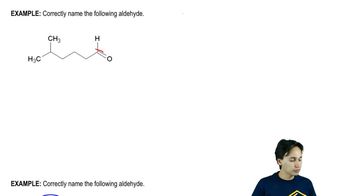Show how you would synthesize the following compounds, starting with acetylene and any compounds containing no more than four carbon atoms.
g. pentanal, CH3CH2CH2CH2CHO
h. pentan-2-one, CH3–CO–CH2CH2CH3
i. (±) 3,4-dibromohexane

 Verified step by step guidance
Verified step by step guidance Verified video answer for a similar problem:
Verified video answer for a similar problem:



 3:19m
3:19mMaster Sodium Alkynide Alkylation with a bite sized video explanation from Johnny
Start learning